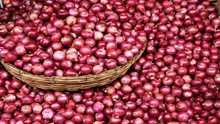
THE NATIONAL COMMISSION ON Agriculture (NCA), reincarnated as the National Commission on Farmers (NCF), implies that farmers are the center of our agriculture. Their success is our success, the nation's triumph. The second Prime Minister of India placed a high priority on this component, which was encapsulated in the famous slogan "Jai Jawan, Jai Kisan." Aleo vera is a medicinal plant that requires little effort to grow and provides significant advantages for a small expenditure.
Krishi Jagran, brings you a guide for the successful cultivation of the medicinal plant :
Aloevera Cultivation
Aloe vera is a valuable and significant medicinal plant. It is a perennial plant that grows to a height of 112 to 212 feet. Its leaves are large and thick, juicy, and have a phylotaxy-like wheel. The leaves have a thorny structure on both sides and a thorny tip. The leaves' inner composition is jelly-like, with a foul odor and a terrible flavor. The leaves are 25-30 cm long and 3-5 cm wide, with a length of 25-30 cm and a width of 3-5 cm.
It usually flowers from October to January, with a vast number of little pink flowers scattered along the long inflorescence. Fruits are produced between February and April. Seeds are rarely used to spread it. Vegetative propagation is easy and convenient. Of late, because of sky rocketing price of allopathic medicines with its known side effects, medicinal plants and ayurvedic medicines are becoming popular.
World trade worth about 80 million US$ dollars exists now and this is likely to increase by 35-40 percent within 5 years. USA dominates the market (65%) while India and China have a share of 10 percent each which could be enhanced by its commercial cultivation.
Soil and Climate
Aloe vera thrives in hot, humid climates with lots of rain. It may be cultivated in a variety of soils, although it prefers a well-drained, high-organic-matter environment. It thrives in direct sunlight. Disease infestation is caused by shady environments. It is quite sensitive to stagnant water. As a result, well-drained highland should be used for farming. For aloe vera growing, rainfall between 1000 and 1200 mm is excellent.
Planting and Preparation of Seedlings Because it's difficult to cultivate aloe vera from seeds, seedlings are usually grown from the plants' roots. Suckers can be used as seedlings in the same way that bananas can. Sucker plantation thrives during the rainy season.
A spacing of 1.5 x 1 ft, 1 ft x 2 ft or 2 ft x 2 ft is followed. Land Preparation About 2-3 ploughings and laddering are done to make the soil weed free and friable. Land leveling is then followed. Along the slope, 15-20 ft apart drainage are made.
Subscribe to our digital copies. Click here.
Application of Plant Nutrients
Approximately 8-10 tonnes FYM/ha is applied prior to land preparation. 35 kg N, 70 kg P205, and 70 kg K2 0/ha are added before the last ploughing. 350-400 kg Neem Cake per hectare can be used to control termites. In September and October, a top dressing of 35-40 kg N can be applied. N dose can be lowered if the soil is rich in organic materials.
Irrigation and Inter-culture
Weeding and earthing up are completed after around 40 days. After applying a top dressing of fertilizer, earthing up is also done. Drought tolerance is limited in aloe vera, although it is extremely sensitive to water stagnation. As a result, adequate drainage takes precedence over irrigation. During droughts, minimal irrigation is sufficient.
Plant Protection
Various insects and pests infest aloe vera. Controlling them is especially important in medical plants like aloe vera, where the juice from the leaves is directly used as medicine. Clean cultivation, inter-culture operation, regular and need-based irrigation, application of enough organic manure, treatment of suker before planting, and aloe vera cultivation in sunny conditions are all favorable to good aloe vera crop growth. Use of organic source of plant protection materials like raw garlic juice, neem oil (10,000 ppm) 2-3 ml / lit, tobacco extractant 20 ml / lit gave reasonably good result.
Harvesting
After 7-8 months of sowing, the leaves can be harvested. Harvesting is done using a sharp knife. It's important to keep an eye on the amount of fluid that escapes from the cut part. If you only harvest once a year, October and November are the optimum months to do it. The second year yields the most, and good yields can be collected for around 4-5 years. After harvesting, the leaves are first dried in the shade, then in the sun, before being stored. Flowers are picked in December and January and dried properly before being preserved.
Yield: Yearly 100 - 115 quintals raw leaves and 350 - 400 kg flowers / ha are obtained.
Medicinal Quality
The juice of both leaves and flowers is used as medicine, while leaves are used to make medications. The juice of the leaves relieves hunger and aids digestion. Cough and cold can be cured by mixing juice with sugar. It also treats neurological weakness, asthma, and jaundice, among other ailments. Constipation can be cured by eating the leaf flesh (approximately 7 g) combined with honey in the morning and evening. It's also effective for a variety of other ailments.
It contains a number of chemical substances that cause sickness. Aloine is the most often used of them. It also contains 12 different types of vitamins, 20 different types of amino acids, 20 different types of minerals, 200 different types of polysaccharides, and numerous forms of glycol-protein, all of which are beneficial to human health. Alaine A and Alaine B are ayurveda medicine principles.
Economics
Expenditure to be incurred for Aloe vera cultivation normally amounts to about Rs.1,10,000 / ha. The expected income with a yield of about 110 - 115 quintal would be about Rs.340,000/ha. The net profit would be about Rs.230,000 /ha/year. In addition to monetary benefit, social benefit would be anormous. Better management can results in much higher income and net profit.
Click here to know 2 Big Mistakes to Avoid While Taking Care of Aloe Vera Plan.









